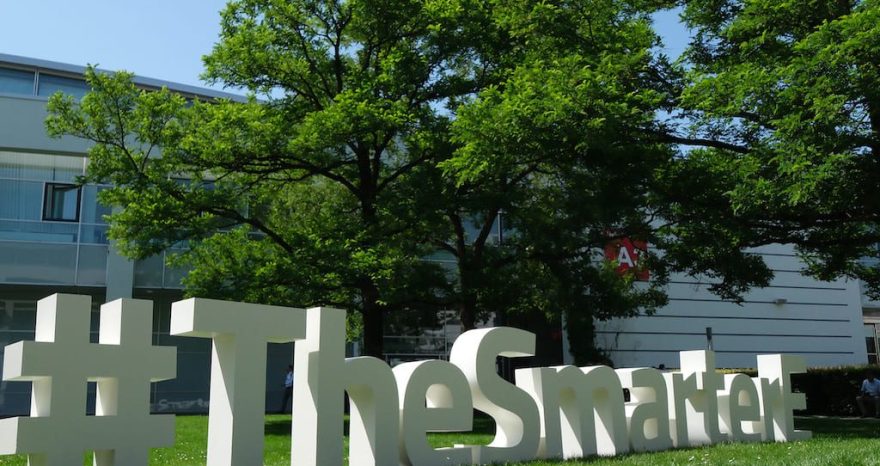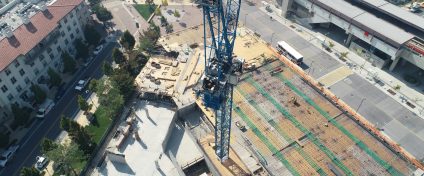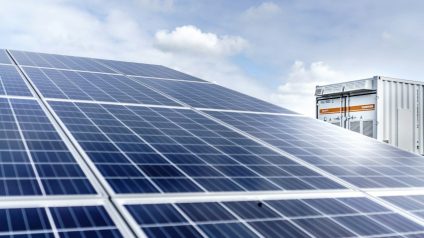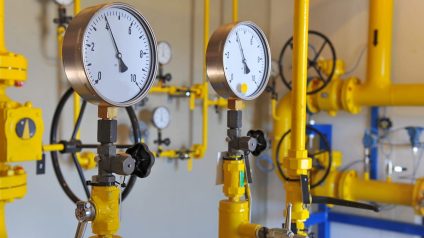Building automation has always managed machine loads and utilities by integrating them, but until about a decade ago, it remained somewhat niche. Today, it plays a fundamental role in achieving both the desired comfort levels and the efficiency standards demanded by the market, as explained by Saul Fava, vice president of Schneider Electric, in an interview with Rinnovabili HUB

The benefits of building automation for sustainability and energy efficiency
What is the current and future role of building automation? We discussed this during KEY – The Energy Transition Expo 2025 with Saul Fava, vice president of Schneider Electric.
How has the concept of building automation evolved in recent years, and what are the key trends shaping the future of smart buildings?
Building automation technology has been around for decades and is now well established. In recent years, its market adoption and range of applications have expanded significantly, driven by the push for electrification.
This trend is also influenced by the Energy Performance of Buildings Directive (EPBD), whose early effects are already visible in the market, and the upcoming adoption of EPBD 4.
There has been notable technological advancement in protocols and a maturation of the overall offering. Fundamentally, building automation has always integrated machine loads and utilities. However, whereas ten years ago it was considered an add-on or niche solution, today it has become a key component in delivering both comfort and the high-efficiency levels the market demands.
How are machine learning, AI, and IoT applications transforming building management and efficiency? Can you share successful implementation examples?
The line between automation technology and artificial intelligence is quite thin. Many functions commonly attributed to AI are actually managed through automation algorithms that don’t require AI to operate effectively.
That said, the growing complexity of control and regulation systems is moving toward advanced optimization between self-consumption and self-production.
A few years ago, building automation was relatively simple: it primarily controlled HVAC loads, consuming energy from the grid. Today, Building Management Systems (BMS) have expanded their scope significantly, incorporating safety and security systems.
Additionally, energy management now requires integrating renewable energy production, accommodating the increasing number of electric vehicle charging stations, and soon, incorporating Battery Energy Storage Systems (BESS) to manage self-production, storage, and grid interaction.
The focus has shifted from simply optimizing energy demand for comfort to ensuring high levels of comfort and sustainability while efficiently managing self-production.
Schneider Electric developed the EcoStruxure platform for smart buildings and recently launched the Building Decarbonization Calculator to help companies assess their environmental impact. What are the key benefits of these tools in terms of system integration, operational efficiency, and occupant comfort?
This is a crucial topic because building automation plays a significant role in sustainability and energy efficiency, to the point that it is included in the new EPBD4 directive and will become even more critical in Transition 5.0.
Quantifying these benefits isn’t as straightforward as reading the efficiency ratings of a heat pump or boiler. With building automation, energy savings depend on how the building is designed to operate. This makes it a more complex process, but the regulations support this transition.
To address this need, we’ve developed a series of tools based on Standard 52120, which defines energy efficiency benchmarks for different types of buildings, including schools, hospitals, and retail spaces.
Leveraging this technical framework, we developed decision-making tools to help companies determine the optimal system architecture, measure the associated benefits, and estimate the required investment.
The goal is to clearly define Return on investment, which is typically very fast, but requires solid benchmarks. These tools have been well received in the market.
With regulatory changes like EPBD4 and the Transition 5.0 Plan, BMS systems are set to be a driving force in the near future. What is their added value, and how does Schneider Electric contribute?
The added value of BMS is undeniable. Smart buildings must efficiently manage the ongoing electrification shift, integrating heat pumps, renewable energy sources, EV charging, and advanced comfort controls.
With 5.0 incentives introduced by Ministry of Enterprises and Made in Italy in late 2024, BMS has been given a central role in building technology systems.
For commercial buildings, qualifying for 5.0 incentives requires demonstrating energy savings, with BMS acting as the central hub connecting generation systems (heat pumps, boilers) and lighting systems.
BMS is now essential for optimizing efficient technologies, ensuring that intelligent building management aligns with sustainable energy use.
Even the most efficient equipment is wasteful if it runs when unnecessary, BMS ensures precision energy management.
What are the main challenges and opportunities for widespread adoption of building automation and smart building solutions in the Italian market?
There are many opportunities, driven by a combination of factors. On one hand, the National Recovery and Resilience Plan (PNRR) is injecting capital into building renovations, with tax incentives for the hospitality sector, public infrastructure investments, and European funding allocated to the 5.0 transition.
Another key driver is EPBD regulations, which establish minimum automation requirements for new and renovated buildings. These standards take a forward-thinking approach, recognizing that BMS can deliver significant efficiency and sustainability benefits.
For context, as of this year, these automation systems are required in buildings ranging from 1,500 to 2,000 m², and by 2030, they will apply to smaller buildings between 500 and 1,000 m², essentially the size of a single-family home.
Adoption is already widespread, and this is further supported by private sector players, particularly real estate investment funds, which are pushing for higher sustainability and decarbonization performance across different asset classes. These improvements not only enhance property value but also reduce time to rent or time to market, making buildings more attractive.
This dual approach, public and private incentives, is driving rapid market acceleration, and we are already seeing its impact.
At Schneider Electric, we are preparing by equipping market stakeholders with tools, resources, and expertise to support them throughout this transition.
What do you envision for the future of smart buildings over the next 5–10 years, and what role will Schneider Electric play in this evolution?
Over the next five years, smart buildings will need to balance self-production, self-consumption, energy use, and storage.
This will require systems that can prioritize energy sources and, if the market for energy flexibility expands, interact with the power grid based on real-time pricing and capacity signals.
In this future scenario, though still in its early stages, smart buildings will continuously optimize between self-consumption, self-production, and storage. Regardless of how quickly the energy flexibility market matures, buildings will become increasingly intelligent, driven by regulatory mandates and sustainability goals.













